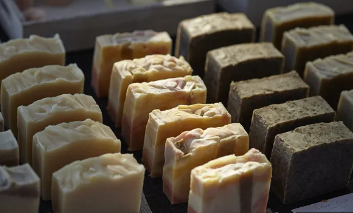
8 Common Soap Making Mistakes
Making soap at home can be an enjoyable and rewarding experience. With the right soap-making supplies, some basic knowledge, and careful attention to detail, you can create beautiful, customized bars perfect for gifting or personal use. Below are some common mistakes people make when making soap. By learning about and avoiding them, you can safely and successfully enjoy this craft.
1. Buying Low-quality Soap Making Supplies
The quality of your ingredients will reflect in the final product. You may follow the recipe to the letter, but if you use low-quality supplies, your results can be disappointing. Invest in high-quality soap making supplies, such as essential oils, fragrance oils, colorants, and botanicals, to increase the chances of a satisfactory outcome. Buy from a trustworthy supplier with a reputation for providing excellent ingredients. Even if you’re on a budget, it’s worth investing in high-quality ingredients instead of risking a negative outcome with cheap supplies.
2. Measuring Inaccurately
Soap making is a precise science. Even an imperceptible difference in the amount of each ingredient can alter the overall product. One mistake people make when measuring ingredients is using measuring cups instead of a digital scale. Volume and weight are two different things, and weight is the more accurate measurement for soap making. Invest in a good digital scale that reads out to significant decimal points so you can measure your ingredients precisely. Precise measurements also lead to consistent products, especially if you’re making soap to sell.
3. Ignoring Safety Precautions
No matter how long you’ve been making soap, always follow safety protocols. Soap making involves using lye, a caustic chemical that can be hazardous if not handled carefully. Safety glasses protect your eyes from potential lye splashes, while gloves protect your skin. Other protective items include long sleeves and pants, an apron, a mask to prevent fume inhalation, and closed-toe shoes. You should also make your soap in a well-ventilated area and have enough water nearby in case of any accidents.
4. Not Using the Right Equipment
Some metals, such as aluminum and tin, can react with the lye used during soap making. That can cause a rancid smell and discoloration or streaks in the finished product. It may also lead to an explosion, though that’s rare. To avoid these issues, use stainless steel, plastic, heat-resistant glass, or silicone equipment to measure and combine your ingredients. Once you invest in the right tools, you can reuse them for a long time.
5. Following Wrong Procedures
Soap making is a step-by-step process that requires mixing the ingredients in a particular order and at specific temperatures. If any part of the process is done incorrectly, such as adding an ingredient too early or not stirring long enough, your soap may not turn out as expected. One mistake some people make is thinking adding lye to water is the same as adding water to lye. Always add lye to the water and not the other way around. This prevents lye from splashing up and causing a potential safety issue.
6. Working in a Distracting Environment
When making soap, stay focused on the task. A distracting environment can make you miss a step or forget an ingredient, which may lead to a faulty product. Small kids, pets, and TVs may distract you from the process. Before starting the process, move to a quiet space where you can concentrate and follow each step without distraction. If possible, set up a dedicated workspace just for soap making.
7. Going Advanced Too Soon
Soap-making involves multiple techniques and processes, some of which are complicated. Before attempting intricate recipes or advanced methods, perfect the basics first. Spend some time perfecting a few basic recipes and become familiar with the entire process before investing in more expensive equipment or moving on to challenging methods. When you’re ready, there are plenty of more advanced recipes to try with impressive results.
8. Overlooking Curing Time
After making your soap, it needs to go through a curing process. During this time, the bar hardens, and the excess water evaporates, giving it a longer shelf life. Overlooking curing time may lead to soft or sticky bars of soap that don’t last long. Leave the freshly made soap to cure on a rack or tray in an area with good air circulation, and turn it over occasionally during the curing process.
Successful Soap Making
These are some of the most common mistakes people make when making soap, but with time and practice, you can learn to consistently produce great results. Use the right soap making supplies, follow safety protocols, pay attention to each step, and allow your soap to cure properly. When you follow these tips, you can increase your chances of producing beautiful, high-quality soap.



